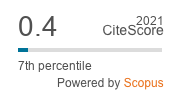Drying fish preference assessment and efficacy of semiochemicals as repellents to blow fly Chrysomya megacephala (F.) (Diptera: Calliphoridae) during sun drying of fish
Abstract
Chrysomya megacephala (F.) is a major pest of fish after harvest and during the processing stage. Existing management strategies are inadequate in curbing the fly menace especially in processing sites with poor hygenic conditions. The present study attempted to evaluate the preference of the C.megacephala in drying fish stages and also evaluated the efficacy of synthetic compounds of some fish based semiochemicals which are identified as repellents. The results of the study indicate that salt cured fish after one- day drying is the most preferred choice for the flies. All synthetic repellents attempted to control the flies, were found to be effective as repellents and had given about 50% suppression of the population compared to control. Urethane (Ethyl carbamate) had shown the maximum repellency (67%) followed by Hexanal (52.6%) and Diphenyl ether (52%). Dimethyl benzothiophene and N, N-dimethyl acetamide also exhibited 43.3 % to 48.2% repellency in alleviating the flies. Results of the preference study provide information to processors about right time to take adequate precaution while sun drying of fish. The study also revealed the possibility of utilising tested synthetic analogues in population suppression of blowflies with an effective dose optimisation before application.


